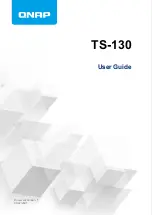
Random Mode
Random Mode is intended to be used by host applications that support SCSI media changer devices. Random Mode is the default.
In Random mode,
The host application chooses the cartridges that are moved to the drive.
I/O slots provide the flexibility for the user to add and remove cartridges, and the host application is automatically notified of these changes.
When you unload the drive, the cartridge in the drive is unloaded from the tape head mechanism, but is still retained inside the tape drive housing. The Move
Cartridges command moves the cartridge from the drive to another location. Moving a tape cartridge from a drive to another location both unloads and moves the
cartridge in a single action.
Sequential Mode
Sequential Mode is intended to be used by host applications that are not supporting SCSI media changer devices and loads another cartridge, if the current cartridge is
full.
In Sequential Mode,
The library predefines the sequential order that the cartridges are moved to the drive.
No control path drive and no media changer device are configured to the host server.
When you unload the drive, the cartridge in the drive is unloaded from the tape head mechanism, and returned to the cartridge home position.
Planning
The library requires an environment that is able to accommodate the appropriate space, power, location, and other technical specifications. Use this section as a reference
for onsite requirements to allow for optimum operation of the library.
Save your settings in the
Server and storage equipment (racks and frames) must be gradually acclimated to the surrounding environment to prevent condensation.
Library layout and location requirements
Information for planning the installation and layout of your library, including various specifications for optimal performance.
Electrical and safety information, and feature codes for purchasing power cords.
The library supports an independent customer network.
More features that are available for your library. To order extra features, contact your IBM® sales representative or Business Partner.
Acclimation
Server and storage equipment (racks and frames) must be gradually acclimated to the surrounding environment to prevent condensation.
When server and storage equipment (racks and frames) is shipped in a climate where the outside temperature is below the dew point of the destination (indoor location),
there’s a possibility that water condensation can form on the cooler inside and outside surfaces of the equipment when the equipment is brought indoors.
Sufficient time must be allowed for the shipped equipment to gradually reach thermal equilibrium with the indoor environment before you remove the shipping bag and
energize the equipment. Follow these guidelines to properly acclimate your equipment:
Leave the system in the shipping bag. If the installation or staging environment allows it, leave the product in the full package to minimize condensation on or within
the equipment.
Allow the packaged product to acclimate for 24 hours.
1
if there are visible signs of condensation (either external or internal to the product) after 24 hours,
acclimate the system without the shipping bag for an extra 12 - 24 hours or until no visible condensation remains.
Acclimate the product away from perforated tiles or other direct sources of forced air convection to minimize excessive condensation on or within the equipment.
1
Unless otherwise stated by product-specific installation instructions.
Note: Condensation is a normal occurrence, especially when you ship equipment in cold-weather climates. All IBM® products are tested and verified to withstand
condensation that is produced under these circumstances. When sufficient time is provided to allow the hardware to gradually acclimate to the indoor environment, there
should be no issues with long-term reliability of the product.
Library layout and location requirements
Information for planning the installation and layout of your library, including various specifications for optimal performance.
The library can be used as a desktop unit or installed in a rack.
For using the library as a desktop unit, see
TS2900 Tape Autoloader
9
Содержание System Storage TS2900
Страница 1: ...TS2900 Tape Autoloader IBM...















































